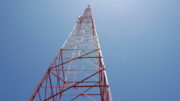In an increasingly interconnected world, we rely on wireless communication and electronic devices more than ever before. From smartphones to Wi-Fi routers, our lives are surrounded by signals and electromagnetic waves. While this connectivity brings numerous benefits, it also raises concerns about signal pollution and its environmental impact. In this article, we’ll explore what signal pollution is, its environmental consequences, and the role of rugged technology in mitigating this issue.
Understanding Signal Pollution
Signal pollution, also known as electromagnetic pollution or EM pollution, emerges when the electromagnetic spectrum becomes overcrowded with unwanted or disruptive signals. This phenomenon occurs when these signals interfere with each other, leading to communication disruptions and potentially posing environmental hazards. Signal pollution stems from various sources, encompassing the proliferation of wireless networks, radio signals, and the electromagnetic interference generated by electronic devices.
The Environmental Impact of Signal Pollution
Signal pollution is not merely an inconvenience resulting in dropped calls or sluggish internet speeds; it has a profound impact on the environment:
Wildlife Disruption
Numerous species of wildlife, including birds and marine creatures, rely on electromagnetic signals for navigation and communication. Signal pollution disrupts these natural signals, causing confusion, altering migration patterns, and interrupting essential mating rituals, thereby affecting entire ecosystems.
Health Risks
Although the direct health effects of signal pollution on humans remain a subject of debate, prolonged exposure to high levels of electromagnetic radiation raises health concerns. Some studies have suggested an increased risk of specific cancers and neurological disorders linked to such prolonged exposure.
Energy Consumption
Excessive signal interference compels electronic devices to operate more intensely to maintain connections, leading to heightened energy consumption. This increased energy usage contributes to greater carbon emissions and elevated energy costs.
The Pivotal Role of Rugged Technology
To combat signal pollution and its adverse environmental effects, rugged technology has emerged as a crucial solution. Rugged technology denotes electronic devices and equipment that are meticulously designed to withstand harsh environmental conditions while sustaining optimal functionality. Here’s how rugged technology assumes a pivotal role in reducing signal pollution:
Durability in Harsh Environments
Rugged technology is engineered to endure extreme conditions, encompassing temperature fluctuations, moisture exposure, and physical impacts. This durability ensures that electronic equipment remains operational even in the harshest environments, thereby reducing the need for frequent replacements and minimizing electronic waste.
Resistance to Interference
Rugged devices are intentionally constructed to be less susceptible to electromagnetic interference. This design characteristic ensures that these devices can maintain signal integrity even in regions characterized by high signal pollution, consequently minimizing communication disruptions.
Longevity and Reduced Electronic Waste
Rugged technology often boasts an extended lifespan when compared to standard electronic devices. This longevity not only translates to cost savings for users but also contributes to a reduction in electronic waste, as fewer devices need to be replaced and discarded.
Strategies for Mitigating Signal Pollution
While rugged technology serves as a valuable tool in the battle against signal pollution, individuals and organizations can also implement strategies to minimize signal interference and its environmental impact:
Proper Placement of Wireless Routers
To alleviate signal overlap and interference, strategic positioning of Wi-Fi routers is essential. It is advisable to avoid placing routers near electronic appliances or other sources of electromagnetic interference.
Shielding Techniques
Employing shielding techniques in sensitive areas can help contain and redirect signals. This approach effectively prevents signal leakage into areas where it is unnecessary, thereby reducing environmental disruption.
Using Rugged Technology in Sensitive Areas
In environments where signal pollution poses a significant concern, the use of rugged technology for critical electronic equipment is a prudent choice. This decision ensures reliable communication and minimizes disturbances to the environment.
Responsible Signal Management
Promoting responsible signal management practices is paramount. This involves turning off wireless devices when they are not in use and employing signal boosters judiciously to avoid over-amplifying signals unnecessarily.
The Future of Signal Pollution Mitigation
As technology continues to advance, innovative solutions for mitigating signal pollution are continually emerging. These new approaches offer hope for a cleaner and more sustainable electronic landscape. Staying informed and actively participating in efforts to combat signal pollution are essential steps toward achieving a healthier and more environmentally friendly future.





